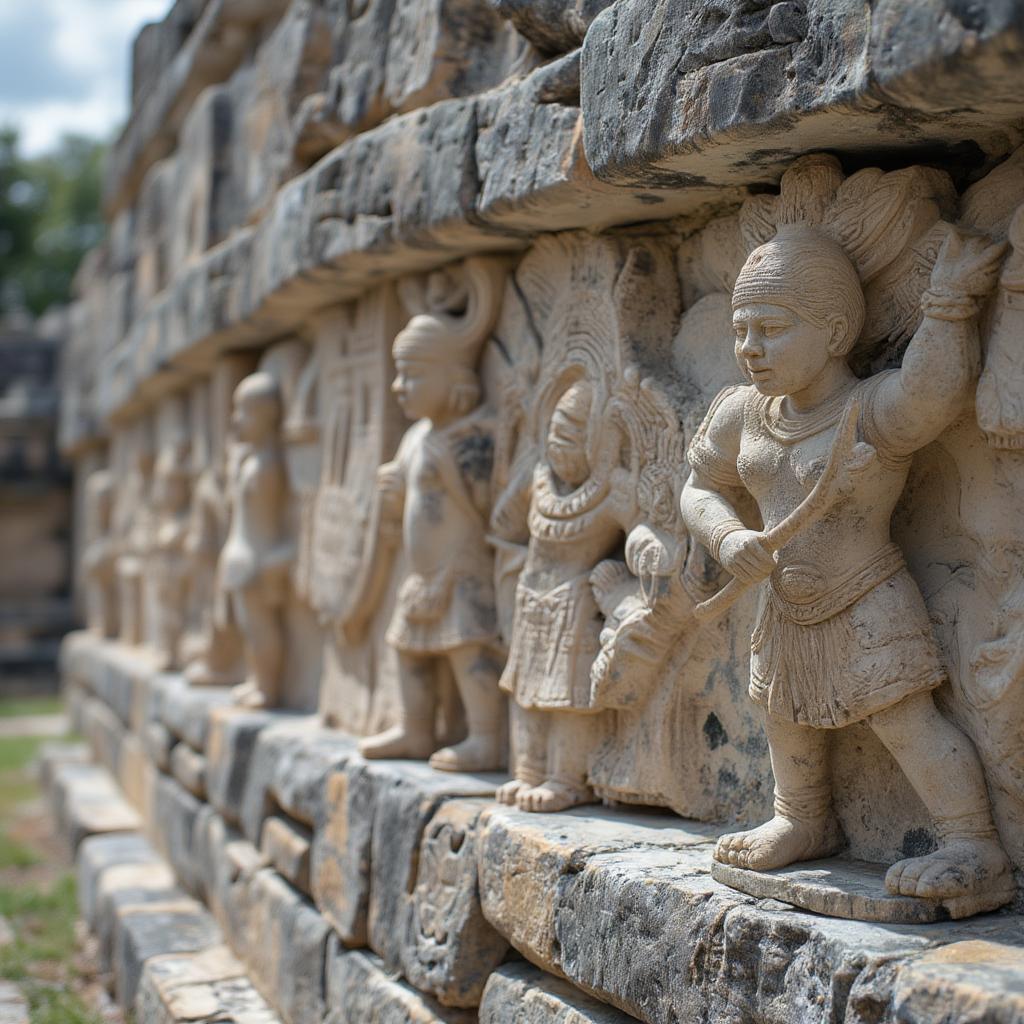Journey Through Time: Exploring the Old Seven Wonders of the World

The Old Seven Wonders Of The World represent remarkable feats of construction and artistry from the classical world, inspiring awe and wonder for centuries. These magnificent structures, chosen by Hellenic authors and historians, showcase the ingenuity and ambition of ancient civilizations. Let’s embark on a journey through time to discover these lost marvels. names of the wonders of the world
The Great Pyramid of Giza: An Eternal Testament to Pharaonic Power
The only remaining wonder of the ancient world, the Great Pyramid of Giza, stands as a silent sentinel in the Egyptian desert. Constructed as a tomb for Pharaoh Khufu, this colossal pyramid, comprised of over two million stone blocks, is a testament to the engineering prowess of the ancient Egyptians. Its precise alignment with the cardinal directions and the intricate internal chambers continue to fascinate archaeologists and historians. What secrets still lie hidden within its depths?
The Hanging Gardens of Babylon: A Lost Paradise Shrouded in Mystery
Legend speaks of the Hanging Gardens of Babylon, a verdant oasis amidst the arid landscape of Mesopotamia. Reputedly built by King Nebuchadnezzar II for his wife, Amytis, these terraced gardens were said to have been a breathtaking spectacle of lush vegetation, cascading waterfalls, and exotic flora. However, their exact location and even their existence remain a subject of debate among scholars. Were they a figment of imagination or a real paradise lost to time?
The Statue of Zeus at Olympia: A God in Gold and Ivory
The Statue of Zeus at Olympia, a colossal seated figure of the king of the gods, was a masterpiece of ancient Greek sculpture. Created by the renowned sculptor Phidias, this awe-inspiring statue, approximately 40 feet tall, was crafted from ivory and gold, adorned with precious stones and ebony. It resided within the Temple of Zeus, a sacred site dedicated to the Olympian deity. Imagine standing before this magnificent representation of divine power.
The Temple of Artemis at Ephesus: A Sanctuary Dedicated to the Goddess of the Hunt
Dedicated to the Greek goddess Artemis, the Temple of Artemis at Ephesus was a breathtaking example of Ionic architecture. Larger than the Parthenon, it was renowned for its stunning marble facade, intricate carvings, and impressive scale. Destroyed and rebuilt multiple times, each iteration showcased the architectural advancements of its era. How did this temple reflect the cultural and religious significance of Artemis in ancient society?

The Mausoleum at Halicarnassus: A Monument to Love and Loss
The Mausoleum at Halicarnassus, an elaborate tomb built for Mausolus, a satrap in the Persian Empire, was a remarkable fusion of Greek, Egyptian, and Persian architectural styles. Adorned with intricate sculptures and reliefs created by renowned Greek artists, it stood as a testament to the wealth and power of Mausolus and his wife, Artemisia II, who commissioned its construction. It served as the inspiration for the word “mausoleum,” denoting a grand tomb. What architectural innovations did this monument introduce?
The Colossus of Rhodes: A Bronze Giant Guarding the Harbor
Towering over the harbor of Rhodes, the Colossus of Rhodes was a bronze statue dedicated to the sun god Helios. Erected to commemorate a military victory, this colossal statue, approximately 108 feet tall, stood astride the harbor entrance, a symbol of the island’s strength and prosperity. Its construction, using innovative techniques to cast and assemble the bronze components, was a feat of engineering genius. How did this statue become a symbol of Rhodes?
The Lighthouse of Alexandria: A Beacon of Hope in the Ancient World
Guiding ships through the treacherous waters of the Mediterranean, the Lighthouse of Alexandria was a towering structure of unprecedented height. Constructed on the island of Pharos, this lighthouse, one of the tallest man-made structures of its time, utilized a complex system of mirrors and fire to project a powerful beam visible for miles. How did this lighthouse impact maritime navigation in the ancient world?
What were the criteria for selecting the old seven wonders of the world?
Ancient writers and historians based their selection on several factors including the scale, artistry, and engineering ingenuity of the structures. They also considered the cultural and religious significance of the wonders and their impact on the world. The list, however, reflects a Hellenistic perspective, focusing primarily on the Mediterranean and Near East.
“The Old Seven Wonders of the World were not merely structures; they were embodiments of human ambition and creativity,” observes Dr. Eleanor Vance, a renowned archaeologist specializing in classical antiquity. “They represent a pivotal moment in human history when civilizations were pushing the boundaries of architectural and engineering possibilities.”
Conclusion: A Legacy of Wonder
The Old Seven Wonders of the World, though mostly lost to time, continue to captivate our imaginations. They serve as reminders of the ingenuity, artistry, and ambition of past civilizations. While only the Great Pyramid of Giza remains, the legacy of these wonders endures, inspiring us to explore the world and uncover the secrets of the past. Let the spirit of these ancient marvels ignite your own sense of wonder and encourage you to delve deeper into the rich tapestry of human history.




